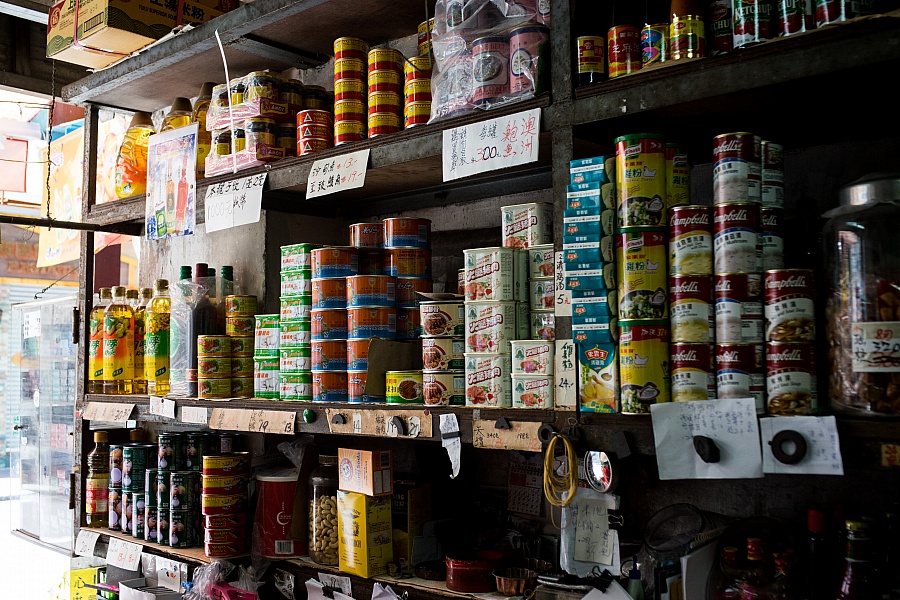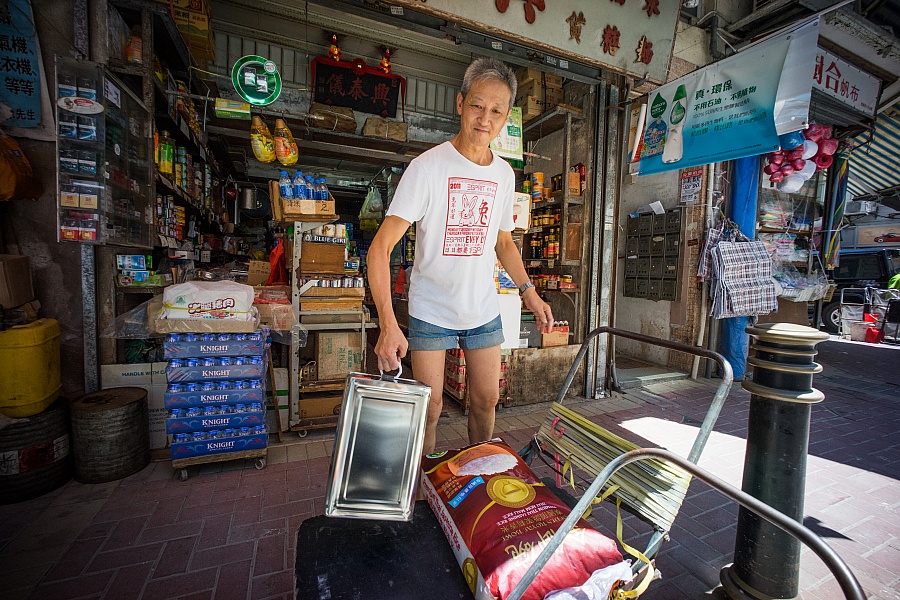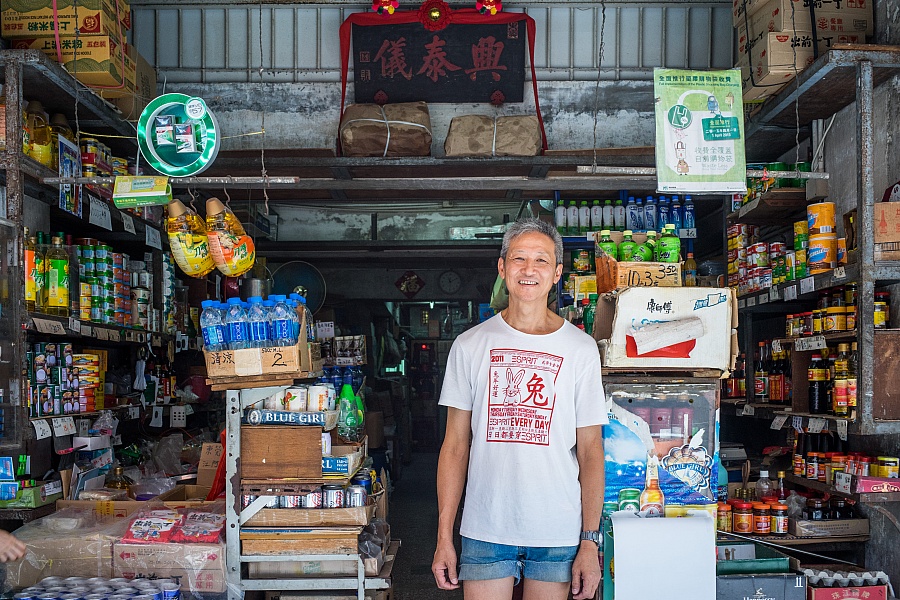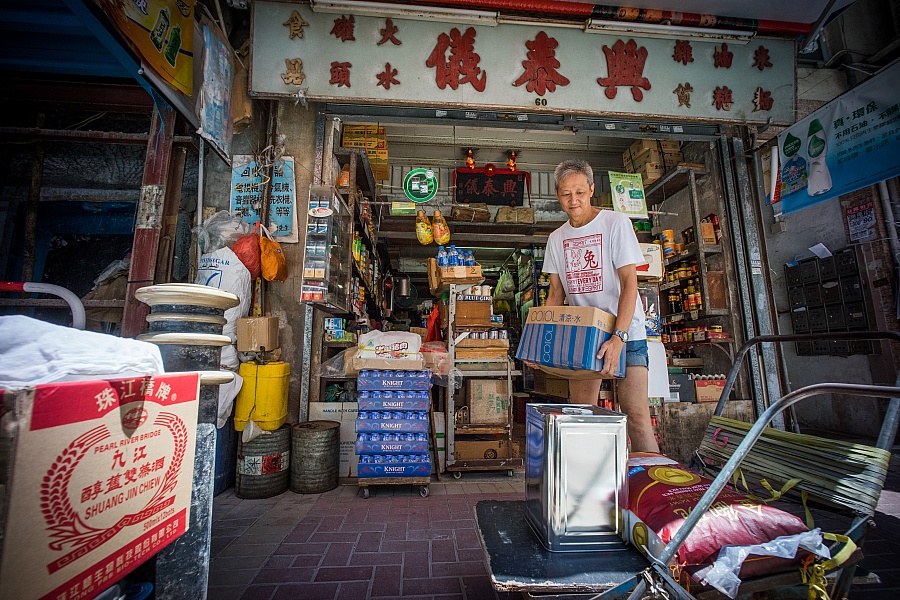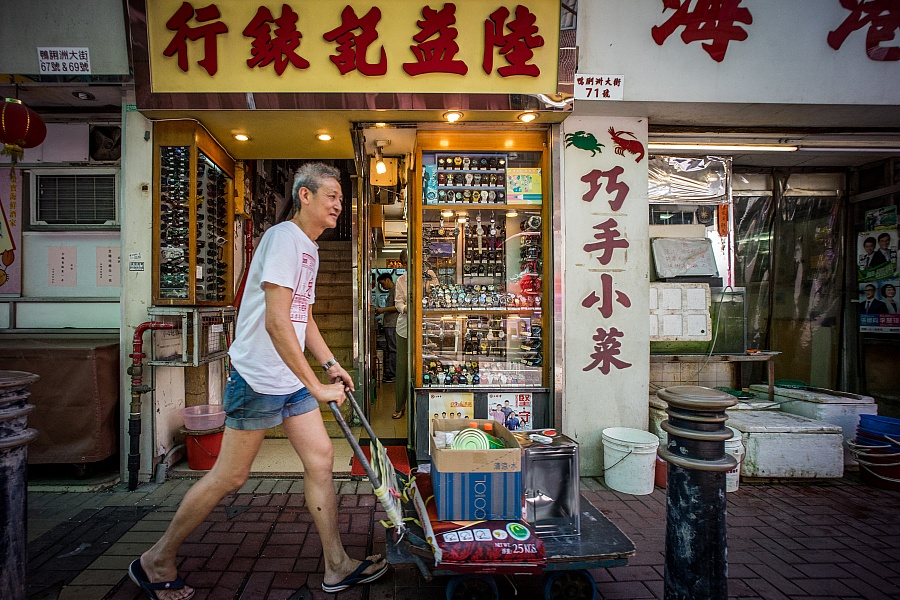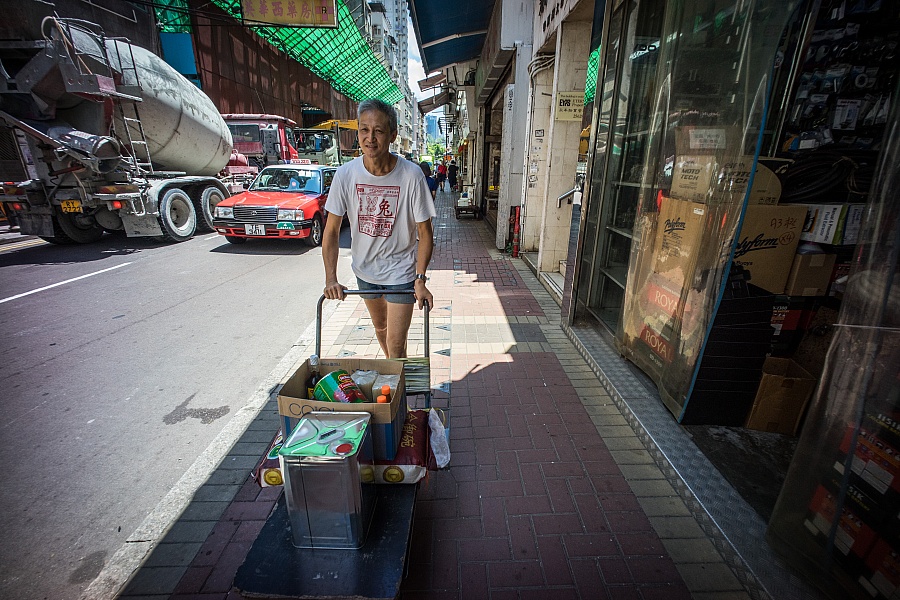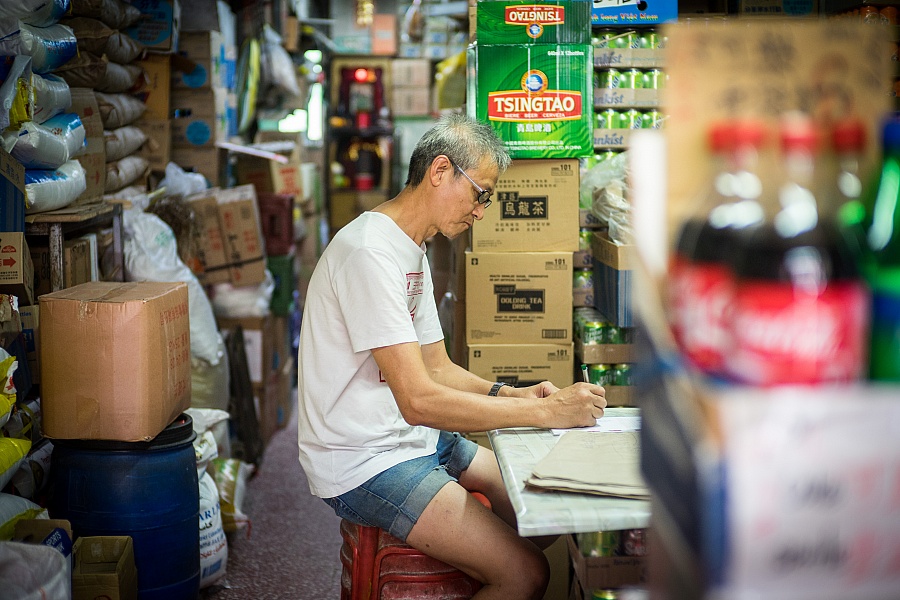LO Kam Kwan
In his fifties
Owner of the rice and grocery store Hing Tai Yee
Many years later, as he delivered rice along Hung Shing Street, Wah Ting Street, Main Street, and the pier, Lo Kam Kwan was tracing the path of his previous three generations. The century-old Hing Tai Yee grocery has seen the best and worst of times. The bubonic plague in 1894 sent Lo’s great grandfather from Tai Ping Shan Street to Ap Lei Chau. Between its old and new storefronts in 99th and 60th Main Street, Hing Tai Yee witnessed the transformation of Ap Lei Chau. Hing Tai Yee stands strong today despite the real estate development right beside its store. Lo Kam Kwan remembers the persistence, challenges, and development amidst Hing Tai Yee’s four generations of family business.
“We have lived in Ap Lei Chau for four generations. My brothers and sisters left home for work very early on. I liked fooling around and soon fell behind in schoolwork. When I turned sixteen, the grocery needed help, so I began tending to Hing Tai Yee. We were all responsible people. My uncle insisted to finish all delivery before going on his plane to the US for further studies. Family business can be both free and suffocating.
Hing Tai Yee didn’t start with selling rice. According to my grandpa, our great grandpa used to sell vegetables before the war. During the war, the Japanese soldiers outsourced the rice store business to some locals. My grandma knew one of the stores. The operator promised us some rice, but turned out it was not enough for rationing. After the war, grandma needed rice to feel secure, so Hing Tai Yee started selling rice. Our first customers were mostly boat people. At its height, there were eight to ten rice stores in Ap Lei Chau. The Dongguan people and Chiuchow people each shared half the market.
Our hometown was in Dongguan. There used to be a Dongguan village – mostly wood squatters – near the current MTR exit. The land people occupied the higher lands of Ap Lei Chau, whereas the boat people built stilt houses from their squatter boats. Marina Habitat used to be all sea. As dirt and mud piled up, squatter boats got caught along the shores. The boat people used wooden stilts as a foundation for their dwelling, which slowly developed into stilt houses.
I’m not quite sure how to tell the story of rice stores. People always think that Hing Tai Yee is a rich business. And indeed, those who hoard rice and food after the war have gone rich. However, little has been made of the hardships of rice stores and groceries in old districts and resettlement areas. Before my grandma died, she explicitly mentioned two persons who owed Hing Tai Yee a lot of money. More than a problem for Ap Lei Chau, this is the forgotten hardship of an entire trade. I could almost say that they always owe something to rice stores.
My dad is in his eighties, but he only retired a few years ago when his body couldn’t stand the work. I’m also aging, my back hurts now and again, but I work while I still can. I have stopped delivering rice to specific blocks. But I still cover the pier and apartments.”
